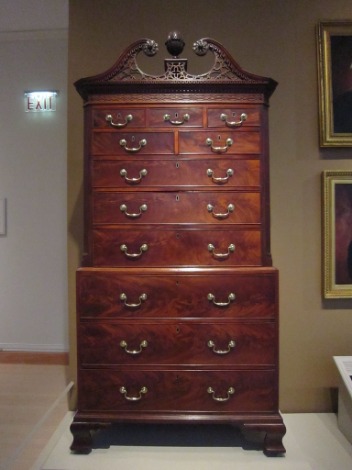27 Dic Gravestone Doji: How to Trade Using This Reversal Candlestick to Strategize

In other words, the market did not move during the period covered by the candlestick. In simple terms, a Doji shows that an asset’s buyers and sellers offset each other. In doing so, any attempts to push up the price by the buyers get thwarted by the sellers.
Traders can combine the neutral Doji with momentum indicators like the RSI or Moving Average Convergence Divergence (MACD) to help identify potential market tops and bottoms. You can also draw Fibonacci levels and match and find the best potential spot where the size of the candle (or double it) reach the nearest fib level or support and resistance use. As it’s critical to enter a trade on proper time, you won’t be profitable or lose your profits if you don’t have an exit plan on your trading. Wait for confirmation and check other indicators to prepare yourself for best market reaction both mentally and for risk management side. Gravestone Doji Candlestick is one of the most controversial Candlesticks should be known as a trader.
Variants of the Gravestone Doji Candlestick Pattern
The pattern is bearish because we expect to have a bear move after the Gravestone Doji appears at the right location. It is typically seen at the end of an advance where the upper shadow represents new high ground for the move. Spinning tops are quite similar to doji, but their bodies are larger, where the open and close are relatively close. A candle’s body generally can represent up to 5% of the size of the entire candle’s range to be classified as a doji. In Japanese, “doji” (どうじ/ 同事) means “the same thing,” a reference to the rarity of having the open and close price for a security be exactly the same. Depending on where the open/close line falls, a doji can be described as a gravestone, long-legged, or dragonfly, as shown below.
Russell 2000 Holds Key Support; Nasdaq, S&P 500 Turn Net Bullish … – Investing.com India
Russell 2000 Holds Key Support; Nasdaq, S&P 500 Turn Net Bullish ….
Posted: Mon, 04 Sep 2023 12:14:09 GMT [source]
With proper strategy, the influential doji candle family offers immense predictive power around trend reversals. The next session’s gravestone doji serves asconfirmation of the slowing momentum and trend exhaustion. While rare, the inverted gravestone doji can form in downtrends signaling https://g-markets.net/ the selling pressure is exhausted and trend change ahead. The gravestone doji signals this exhausted pessimism and transition to cautious optimism through the long lower wick. The long upper wick resembles the gravestone shape, which is how this pattern earned its ominous name.
Combining the Gravestone Doji with Other Technical Indicators
The term gravestone doji refers to a bearish indicator commonly used in trading by technical analysts. A gravestone doji is a bearish reversal candlestick pattern that is formed when the open, low, and closing prices are all near each other with a long upper shadow. The long upper shadow suggests that the bullish advance at the beginning of the session was overcome by bears by the end of the session.
Hence the long upper wick and the narrow base at the bottom reflect what a gravestone would look like from the side. The Japanese were fond of naming candlestick patterns for their likeness in real-life. If the Gravestone appears after a pricing downtrend, it can indicate that a price increase may follow (a bullish sign). However, since this occurrence is rare, most traders will typically wait until the following day to verify the possibility of a price uptrend after a Gravestone. The Gravestone Doji chart pattern is an inverted “T”-shaped candlestick that’s created when the open, high, and closing prices are nearly equal. The most important part of the Gravestone Doji is the long higher shadow.
- A Gravestone Doji represents an inverted T-shaped candlestick, with the open and close coinciding with the low.
- The next candle after the doji breaks the trigger line, therefore we open a short position.
- In other words, the market did not move during the period covered by the candlestick.
- Additional candlestick indicators like engulfing patterns, shooting stars, marubozus, and harami crosses can augment gravestone doji reversals when combined.
The long upper wick showed buying pressure stalling at multi-year high resistance. Look for them near major support levels or positive divergence for confirmation. Notice how the uptrend leads into the gravestone doji precisely at the prior swing high resistance level around $106. Sine a gravestone doji must form after an uptrend, we might want to use a condition to ensure that the market has gone up sufficiently for us to enter a trade. The volatility levels in a market often have quite a significant impact on the performance of a strategy.
How Do You Trade on a Gravestone Doji?
Identifying the Gravestone Doji candlestick pattern in trading charts is a crucial skill for traders who use price action analysis as part of their trading strategy. In financial charts, the Gravestone Doji trend is a bearish reversal trend. It indicates a potential trend reversal when it shows up at the upper side of an uptrend or after a prolonged period of bullish market activity. The pattern is frequently used by traders in conjunction with other candlestick patterns to spot possible entry and exit points for a trade. The opening, closing, and high prices may be equal or nearly the same. When this happens, the possibility of a trend reversal is likely with a new bearish trend on the horizon.
Let’s use the Bitcoin (BTCUSD) October 8th, 2021, daily chart to validate this. The image shows another Gravestone Doji trading example; however, this time the results gravestone doji candlestick pattern are more favorable than our first trading example. For this example, we are going to go with twice the size of the Gravestone Doji as our profit target.
Momentum Divergence
While the Gravestone Doji can signal a potential bearish reversal, it’s important to remember that no indicator is foolproof. Market conditions can change rapidly, and what was once a strong buying trend can quickly reverse. Gravestone dojis are powerful candlestick chart patterns signaling impending trend reversals. With the right context, they provide advanced warning of trend changes at inflection points. It signals potential reversal lower from an uptrend or resistance, similar to gravestone dojis.
- RISK DISCLOSURETrading forex on margin carries a high level of risk and may not be suitable for all investors.
- A Gravestone Doji, with its long upper shadow, signals a potential bearish reversal.
- The construction of the Gravestone Doji pattern occurs when bulls press prices upward.
- In the image above, we outline the trigger line that shows the exact moment when you should short the stock after identifying the doji candle.
- Since candlestick patterns are representations of market price movements, they tell us a lot about what happened, and how the market acted.
Another popular way of trading the Gravestone Doji candlestick is using the Fibonacci retracement tool. It’s simple, the Gravestone Doji pattern is traded when the low of the candle is broken. A Gravestone Doji appearing after this bullish move is a sign of a possible reversal to the downside. When trading the Gravestone Doji, we want to see the price first going up, making a bullish move. Usually, it appears after a price move to the upside and shows rejection from higher prices. Elearnmarkets (ELM) is a complete financial market portal where the market experts have taken the onus to spread financial education.
You should consider whether you can afford to take the high risk of losing your money. The construction of the Gravestone Doji pattern occurs when bulls press prices upward. Although these two formations are talked about as separate entities, they are essentially the same phenomenon. After posting a low at $2528.25, the SPOOS rotate higher and initiate a deeper pullback. This counter-trend rotation lasts until a short-term daily swing high is printed at $2790 on February 27th, 2018. Now that you understand the psychology behind the pattern and know how to identify it, lets take a look at an example of how to trade it.
What Is a Gravestone Doji Candlestick Pattern?
Another useful tool is trendlines, which can be used to identify key levels of support and resistance and to confirm trend reversals. When the price action stays below a downtrend line and a Gravestone Doji forms after a rally to the trendline, it can indicate a good shorting opportunity. A textbook gravestone doji at a key level of resistance forms on March 12, 2018.

They drive the price of the security up to an unsustainable level. From there, the bears take control and are able to sell the security down to its low by the end of the session. The gravestone pattern can be used as a screening filter in ChartMill. To do so, open the TA indicators menu on the stock screener page and open the drop-down menu under ‘candlestick’. It looks like an upside-down version of the Gravestone and it can signal a coming uptrend. Overall, the Gravestone Doji is easy to identify in trading charts.
This is used as an early indicator highlighting that the trend will reverse downwards. This article does not contain investment advice or recommendations. Every investment and trading move involves risk, and readers should conduct their own research when making a decision.


No Comments